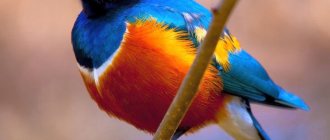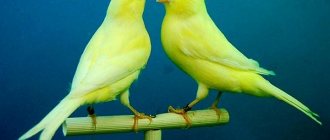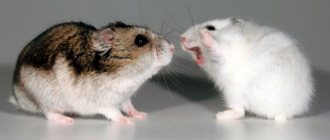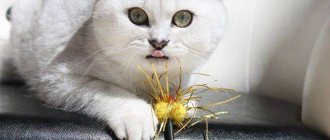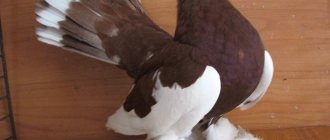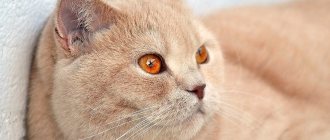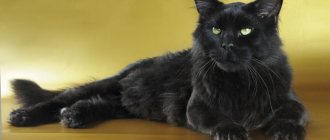*Complex for rich red color
*The beginning of coloring of canary chicks
Red factor canaries are a colored breed of canary that are prized for their shape and coloring rather than their song. You may have heard that flamingo chicks are born grayish-white and remain that way until they start eating algae and seafood rich in carotenoids and canthaxanthin. Such substances are found, for example, in some seafood, which gives them a reddish, pink or orange tint. Therefore, consuming pigmented food daily for a long time, during molting a flamingo acquires a pink or even red color of plumage (the color saturation of a flamingo depends on the amount of pigment in its body), the same applies to a canary with a red factor.
But you shouldn’t even assume that adding carrots, red peppers, all kinds of “vetorons” and other “natural dyes” to the diet will help turn the canary red. The pigment concentration in them is so low that eating only red peppers will make the bird barely orange. There is no need to reinvent the wheel - everything was invented and patented long ago! Yes, it’s not cheap, but beauty always requires sacrifice.
You can also find among unscrupulous breeders such enthusiasts who paint their, often outbred, yellow ones with pigment for red canaries, so that later they can sell them for twice as much, because an ordinary fan will not reveal the deception soon, only when the bird begins to molt. But even with an increased dosage of canthaxanthin, yellow canaries will at most be bright orange or carrot-colored, never red. And, knowing the queries in search engines, such as “how to repaint a yellow canary red,” for which such people will read this article in search of information, because They don’t have the rules for pigmentation of canaries at all, I want to personally convey my warm regards to them, because... It is from them that “orange and orange” colors appear on sale, although in the standards of the colored breed these are absent and are considered defective, only in the decorative breed there are orange, Yorkies and Norwiches, for example, for which there is an orange pigment (dye).
red canary without molting pigment (left) and painted (right)
Red Canary Pigmentation Methods
There are three main substances used in color feeding red factor canaries: canthaxanthin, beta-carotene and carophyll.
Each breeder has his own method and uses his own type of pigment. Some use soluble pigments in drinking water, others mix them with soft food. The most common is the use of canthaxanthin or red carophila at a rate of about 10 g per kilogram of mash or 10 g per 1 liter of drinking water. It is better to first dissolve the pigment in a small amount of warm water, then add the solution to the required amount of water to serve to the birds.
Betacarotene complex for rich red color
Beta-carotene is the ideal supplement to give the bird excellent vibrancy. A solution containing 3 parts beta-carotene and 7 parts canthaxanthin or carophile gives a good effect. This distribution may be slightly different, but you need to understand that beta carotene is a supplement, don't use it alone because the birds will be orange rather than red.
poorly colored canaries (low dosage/high % b-carotene)
Description
The house canary is an artificially bred subspecies of the Canary finch (Serinus canaria). During domestication, the vocal apparatus of these birds changed, which made their singing unique.
The appearance of the bird has also changed. The domestic canary is larger than its wild ancestor; The body length of representatives of different breeds ranges from 11 to 23 cm. The body shape is typical for finches; the head is rounded, with a short strong beak. The wings are well developed and the flight is undulating.
The canary poultry has a recognizable color. The most common plumage color is bright yellow, but selective breeding has produced varieties with feathers in orange, white, brown and other shades, as well as variegated forms. Some variations have curled feathers or a crest on the head.
Constancy and uniformity of canary coloring
For red canaries, during the molting period, pigment must always be available, otherwise we may end up with birds with areas without pigment. To avoid the appearance of reddish spots with different tones, it is advisable not to change the dose of pigments throughout the entire molting process. Stopping the use of pigment for a few days is not critical because the liver always has pigment reserves for a few days, but a longer interval may result in poorly pigmented feathers with subsequent patchy pigmentation.
red canaries during molting and pigmentation period
SINGING AND DECORATIVE CANARIES
Background of the House Canary
Canaries are white, red and yellow.
Canaries are virtuosos not only in singing, but also in flying.
Yellow songbirds and red decorative canaries. To preserve the purity of the breed, they cannot be crossed.
Canary with a crest. Both songbirds and ornamental birds are crested.
Japanese curly-haired canary.
Parisian curly canary. Japanese and Parisian curly canaries are decorative birds.
‹
›
The homeland of the wild canary (Serinus canaria), the ancestor of the widespread and famous indoor songbird, is a group of islands off the western coast of Africa (Canary Islands, Azores, Madeira). It is interesting that a closely related species, the European canary finch (Serinus serinus), is found not only in northwest Africa, on the islands of the Mediterranean Sea, in Southern Europe, but also in the Baltic states, in Belarus, from where it moved to Kaliningrad, Pskov and Leningrad regions of Russia. In southern Europe, finches live sedentary, but in our country they are migratory birds that appear in early spring. These birds belong to the passerine order, the finch family, and are related to the siskin, goldfinch and greenfinch.
Canary finches have a short beak and dull colored plumage. The European species in autumn-winter plumage looks very modest: the back and wings are grayish-brown, with dark longitudinal streaks, the underside of the body is greenish-yellow, with streaks on the sides, and the underside of the abdomen is whitish. By spring, due to the fraying dull tips of the feathers, the bird is transformed. The forehead, neck, stripe above the eyes, chest and abdomen turn yellow. In females and young birds the yellow color is very dull. The male's song is very simple: a murmuring trill with sharp creaking sounds, reminiscent of the chirping of a cicada. During the mating season, he sings very actively, swaying from side to side, ruffling the feathers on his head, spreading and lowering his wings.
The plumage color of the Canary finch is similar to that of the green house canary. The singing of males is rich in beautiful sounds, very melodic and pleasant to the ear. The first Europeans to fall under its spell were the Spaniards, who landed on the Canary Islands in 1478. Birds, along with many other riches of the picturesque islands, began to be exported to Spain. Only males—owners of the miracle song—were caught. They sold them for a lot of money. For almost a century, Spain was the only country that traded foreign songbirds. Unclear differences in the coloration of young males and females, however, led to errors in the trade, and then buyers from southern and central European countries were able to start breeding canaries. At the turn of the 16th-17th centuries, mutants of pure yellow color began to appear in the offspring of birds of the usual greenish-gray color. This time was the “birth” of the real domestic canary.
At the end of the 16th century, canaries were brought from Northern Italy to the town of Imst in the Tyrolean Mountains. It is considered the “cradle” of the most famous singing breeds.
In those early years, canine breeding was almost exclusively a male occupation. In Imst, a small mining and industrial region, the new fishery developed so successfully that it turned into a good source of income. Every year, entire expeditions of canary sellers departed from here. Bird traders visited many European countries and even reached Syria, Turkey, and Russia. Large quantities of feathered singers arrived in England.
English, Dutch, Belgian, French and Swiss bird lovers bred decorative breeds of canaries: colored and figured. Representatives of the latter group are interesting due to their original physique. Some of them are very large (22-23 centimeters long), others, on the contrary, are dwarf, others are curly, and others are humpbacked. All of them are characterized by low quality of singing, which no one has improved. Humpbacked canaries (now there are five breeds of them) amaze with their unnatural, even ugly appearance. They have long legs, a vertical stance of the body and tail, and a small head on a long neck extended below shoulder level, like a vulture. The curly-haired breeds are original (there are only nine of them): the plumage of the Parisian canary seems to be curled with hot curls all over the body. Others have curl only on the chest, back and sides of the body.
When the mining industry in Imst began to decline, most of the population, along with their canaries, moved to Andreasberg, one of the ancient mining towns of the Upper Harz. Here canine breeding has taken on an even wider scale. Many miners devoted all their free time from hard work to breeding canaries. Self-taught breeders selected the best females and crossed them with males who were distinguished by a low and soft sounding voice. Techniques for teaching young kenars how to sing well were also improved.
In Russia, canine breeding began to spread in the 18th century, when Tyrolean traders began annually delivering large quantities of their birds from Imst to Moscow. In the 19th century, foreign “soloists” gained nationwide popularity and became easily available for purchase. Russian fanciers, having studied the ability of kenars to onomatopoeize, have ennobled their song with the trills of buntings and the titmouse “ringing”. The tune of the Russian canary began to be called oatmeal or oatmeal.
Kenary breeders from the city of Andreasberg took a different route: they trained the birds with the help of special organs and whistles. By the end of the 19th century, the so-called noble Harz roller (from the German rollen - roll, roll out) with a pipe tune was created. The roller song is reminiscent of quiet organ music, it sounds deep, muffled, soft and does not irritate the ear. There are murmurs, low flute whistles, bubbling, the ringing of a bell, and also something like the noise of a bowling ball rolling on a wooden floor. And there are absolutely no loud sharp trills and “sharp” sounds, which are very often found among modern Russian kenars. The roller performs the song with its beak closed or almost closed, strongly inflating its throat. However, these birds have not become widespread in Russia.
The color of the plumage of song canaries can be green, lemon, pale yellow (whitish), white, gray, variegated (green with yellow or gray with white spots).
Oatmeal tune
The bunting kenar sings with an open beak, emitting loud and ringing, high-pitched trills.
Experts conventionally divide the song of any bird into “knees,” that is, into the likeness of words. For example, the sonorous song of the common oatmeal - “tsin-tsin-tsin-tsin-tsin-siii” - consists of two “words”, the first of which is repeated five times. The kenar sings incomparably more complexly: the number of knees in the oatmeal tune is about twenty (the bird is not able to learn all of them). The modest song of a bunting or tit, memorized by a canary, turns into one of the tribes of his “repertoire”. Most often, singers perform from six to eight knees.
For those who are interested in oatmeal canaries, I recommend reading the book “Canary” by I. E. Basiches. It describes in detail all the knees, their distortions (dissonances), and provides the correct order for singing the knees. The fact is that a trained kenar must perform knees in a clearly defined sequence, without changing the order in any way. Such singing is called planned and is very much valued, as the bird retains it until old age. Males with a chaotic combination of knees in song will eventually lose the most difficult (and usually the most melodic) sounds to play. It is very bad if the kenar breaks the song into two independent parts: sooner or later one half will be forgotten.
Red factor
In 1915, three German canary breeders began experiments on hybridizing the domestic canary with the Venezuelan fire siskin (Spinus cucullatus), a small, brightly colored bird. The male has a black head, wings and tail, a whitish abdomen and fiery red rest of the plumage. The female is less strikingly colored: the lower body is orange-red, the back is covered with an orange coating. Crossing with an exotic siskin introduced the hereditary “red factor” (the gene responsible for the inheritance of red pigment in plumage) into the genotype of the domestic canary. The ability to breed new variations of canaries has expanded significantly. We are not talking about the red color of the plumage, but specifically about the red factor, the owners of which are orange, and pale pink, and “bronze”, and “copper” birds.
It turned out that the song of the siskin is genetically linked to the red factor and manifests itself in colored canaries, introducing cacophony and a different sound timbre that is not inherent to the canary. For ornamental birds this does not matter. Fans of singing canaries had to introduce a clause into the breed standards prohibiting the use of breeders with a red factor in their plumage.
In the 50s, large quantities of red canaries were brought to the USSR. Many domestic canine breeders have set themselves the goal of obtaining both a well-singing and elegantly colored bird. Hobbyists crossed oatmeal singers with exotics. The results were disastrous and are still being felt today.
Theoretically, the possibility of breeding an oatmeal red canary cannot be ruled out, but this will be the fruit of the concerted efforts of many experienced canary breeders. The process of crossing and selection will last for many decades. It is no coincidence that French, German and American breeders chose the Harz roller, which has a low-pitched song, for such an experiment. The Russian canary, with its ringing and clear high-pitched song, should not be crossed with color variations (even with orange).
Unpretentious indoor bird
Keeping canaries is not difficult. This is a completely domesticated bird that can live in small cages without any problems. The minimum size of the “living space” for a canary: 32 x 16 x 24 centimeters (length, width and height). It is better if the length of the cage is 40-45 and the height is 30 centimeters. Foreign fanciers write that a cage for one canary should not be less than 60 x 40 x 40 centimeters. It should be borne in mind that these recommendations are given for birds of ornamental breeds, which are not only noticeably larger and “longer” than ours, but are also more prone to obesity due to inactivity.
Each male needs a separate cage. The singer should not see his neighbors (this worries him), so cages with canaries are placed one on top of the other or fenced off with opaque curtains.
It is best to keep males and females in the same room only during nesting time. The call signs of the female greatly excite the male sitting in a single cage, and in the spring-summer period his song may deteriorate.
The cage tray is lined with newsprint in two or three layers. The litter is changed twice a week. Once or twice a year, the cage is disinfected: thoroughly washed with warm water and soap and cleaned with a brush.
For complete comfort, the bird will need three perches: one installed at the bottom, two parallel at the top.
The cage should have a drinking bowl, a bathing bowl and a feeding trough.
Canaries are big fans of swimming. They often use water from drinking bowls for water procedures and contaminate it. Therefore, it is better to hang a special bathing suit filled with water at room temperature from the open door of the cage. It is removed after the bird has bathed. One water procedure per day is enough. Hanging bathing suits are much more practical than various vases and saucers with water placed at the bottom of the cage. By the way, bathing is good for canaries. A sick bird, as a rule, does not want to bathe.
Drinking water (fresh, at room temperature) should always be in the canary’s home. Moreover, it is better to use a hanging drinker, rather than placing it on the bottom of the cage, especially under a perch, where the water will quickly become dirty.
Feeders, where the daily food ration is placed, can be retractable or hanging. They are placed away from the drinking bowl so that water does not get on the food. The food in the long retractable feeder is quickly contaminated by the bird, which jumps in with its legs while eating.
For egg food, grated carrots and wet bread, you need a separate feeder in the form of a small bowl. After the bird is satisfied, the bowl is removed (along with any remaining food), washed and dried.
Canaries are fed mainly with a grain mixture of rapeseed, rapeseed, millet, white canary seed, oatmeal, hemp seeds, sunflower and flax. Sunflower seeds need to be lightly crushed. Oilseeds (hemp, sunflower, flax) should not exceed 10% of the total composition of the grain mixture. Canaries do not like millet, but they eat white and yellow millet much more readily than orange-red millet. They willingly feast on white bread soaked in milk. The birds' diet should include a boiled chicken egg and fresh non-sour cottage cheese. Vitamin-rich foods include sprouted seeds of millet, rapeseed and sunflower, as well as lettuce, tradescantia, dandelion, woodlice grass, grated carrots and various ripe fruits.
The cage should have a separate small feeder with coarse river sand and crushed eggshells. The sand and shells are pre-washed, boiled for 10-15 minutes and dried.
During the molting period, red and orange canaries should be given carotene-containing food: white canary seed sprouts, grated carrots and boiled beets. Otherwise, the new plumage will be paler than the old one that falls out.
In winter, “grass” is grown for birds in pots with soil: seedlings of wheat, rapeseed, sunflower, millet.
Difficult choice
It is better to purchase canaries in the autumn-winter months (from November to February): by this time, all males have finished molting, gained strength and sing their songs quite loudly, and therefore both advantages and disadvantages are clearly revealed in the performance of each tribe. From February onwards, the singing of males deteriorates somewhat: the nesting period begins and the canaries begin to get excited.
In summer, adult birds molt. At the same time, the males do not sing or sing very little, and the “teenagers” that have not yet moulted have not yet formed a song.
The bird must be examined in a calm environment and slowly, so as not to repent later. It is best to do this on the farm of an experienced cannon fodder breeder who keeps birds of the same type. The canaries are auditioned individually, since in a choir all defects are poorly noticed, and it is not possible to fully identify the advantages of the bird.
For breeding, it is recommended to purchase at least two kenars with a well-established identical song. Males singing in a low voice are mostly young or sick.
With age, the canary's claws gradually enlarge and the scales on its paws grow. By the age of four or five, the bird becomes less mobile and active than, for example, at one year of age, although outwardly it hardly changes. With good care and proper feeding, canaries live 10-15 years.
To distinguish a canary from a female, the bird is taken in the hand, turned upside down and the feathers in its lower part are inflated. In the male, the cloaca is elongated into a tube with feathers at the end, in the female this place is flat.
A pair of canaries for nesting will need a cage 55-60 centimeters long, 30 wide and 30-40 centimeters high. “Youth” who have become independent are temporarily separated from their parents in an equally spacious cage.
Breeding canaries is a whole science. This topic rightfully deserves a separate article.
Maintaining a Healthy Canary Liver Using Pigments
Excess pigments, like other drugs, can damage the bird's liver, so you must be careful with the dose you give and frequent use of liver protectants is also highly recommended. The trick to see if the pigment is damaging the liver is to watch the birds' excrement. If they are red, then you need to reduce the amount of pigment, because it is not completely absorbed and harms the bird’s liver.
Description of appearance
This bird, like its relatives, is small in size - 12-14 cm. Outwardly, it is practically no different from other colored canaries, since it belongs to the same species. Its only difference is its bright yellow color. There are also variations of yellow coloring. However, brightness is valued above all.
On a note! Bright yellow canaries are the most common, and are quite highly valued among breeders.
Lifestyle
Birds are diurnal. They are quite nimble and active, so they need a spacious cage. But, since this bird is small in size, purchasing a spacious cage does not become a problem.
Loves to sit on perches and flutter from branch to branch. Therefore, the cage must have several branches and perches. It is recommended to keep these birds in pairs.
Beginning of coloring of canary chicks with red factor
There are two basic laws in pigment coloring of birds. Intense and shimmel canaries are pigmented from birth, mosaics from 45 days. The reason is very simple: red canaries must have pigmented tail and flight feathers (tail/wing), there is no mosaic. If you are raising a variation of the red white-winged canary, then you need to paint them like a mosaic bird. Some red canary breeders begin adding dye even before the female lays eggs, so the pigmentation of future chicks may increase by accumulating carotenoid deposits in the ovary, where they will pigment the yolk of the egg. After the chicks fly out of the nest, it is recommended to take a break of a couple of weeks until the chicks begin their first molt, then color the young until the chick feathers are completely replaced by an adult one. Tail and flight feathers do not change during the first moult - this is the reason for the coloring of chicks from birth.
chicks with red factor: lipochrome / melanin / mosaic
What we must avoid at all costs is pigmentation in sick birds or when treated with antibiotics, since in these conditions the priority should be the restoration of the bird, and not its preparation for competition and sale. We must keep in mind that the combined use of pigments in large quantities along with the use of antibiotics, and all this in a state of illness (low defense, metabolic disorders), will at best cause a delay in recovery.
Breeding canaries at home
Some people try to breed canaries at home, some are seriously interested in this matter, and some are just for fun, but, nevertheless, in both cases this issue must be approached responsibly. To breed them, large males with beautiful plumage and good singing abilities should be selected.
If the breed is planned to be pure, then only one female is added to the male; if not, then 2-3 females. You should also prepare a nest in the cage; for this, small wicker baskets are placed in it, inside which dry hay, thick threads made from natural materials, and thin soft twigs are placed.
During the period of courtship, mating and reproduction in general, you should not move the cage and minimize tidying in it. After mating, the female lays eggs after about 10 days and incubates them for about 15 days.
As soon as the chicks hatch, the male can be removed from the cage, and the amount of food should be increased. You should definitely increase the amount of egg whites and soft foods in your diet.
As soon as the chicks are one month old, they should be placed in other cages, especially for males. At this age, females can be distinguished from males by their chirping; in males it is longer and more melodic, while in females it is short and not particularly melodic.
The effect of pigment on the body of canaries
Once ingested, the red pigments pass through the intestinal wall, are transported by the circulatory system to the liver, where they are stored and undergo some transformations into canary-specific carotenoids such as canary xanthophylls A, B, C and D, they later pass back into the bloodstream and through the capillaries reach the epidermis, from where they pass to the feathers and are deposited to pigment them.
Fats promote the fixation of carotenoid pigments, so it is important to introduce oil seeds (niger, hemp, flaxseed, canola, sunflower seed) and nuts during shedding, albeit in moderation, due to the risk of diarrhea or hepatitis. For this reason, during this period it is convenient to administer choline chloride or, even better, soy lecithin, which, as a liver corrector, improves the absorption of fats and contributes to the proper functioning of this organ (liver). It is also convenient to administer vitamin E because it prevents fat oxidation (antioxidant function); let's not forget that pigments are lipids. It is not recommended to introduce charcoal or vegetables in excess, because, having a laxative effect, they reduce the fixation of carotenoid pigments.
Basic methods of determining sex
The sex of a canary can be determined by three characteristics: appearance, voice and behavior.
| Tail | In females it is 5 mm shorter, directed upward, in males it is longer, turned downwards. |
| Plumage | Males are brighter (typical only for wild species). |
| Cloaca (recommended to be considered during the breeding season). | In canaries it is cylindrical, protruding outwards, in canaries it is hardly noticeable, covered with feathers. |
| Rib cage | Canaries have a small chest and a massive belly, while canaries have a convex chest and a small abdomen. |
| Head | Kenars have a massive round head, and their “girlfriends” have a flat, poorly developed forehead. |
| brood spot | Appears on the belly of the female when laying eggs. Blood vessels are strongly visible along the belly, which provide warmth for incubation and heating of the chicks. |
Sounds and singing
The voice of canaries is their calling card. Because of this ability, many breeders prefer this type of bird. Considering that boys sing louder, they are the first choice when purchasing. Males begin to sing at 5 months, but begin to show musical talent after 8 months. But it is worth considering that up to 6 months of age, chicks produce almost identical trills and it is almost impossible to distinguish them by their voices.
| The male's voice is loud, booming, multi-toned, varied (during the mating season it almost never stops). The goiter swells when singing. | The female canary has a jerky voice, reminiscent of light whistling, chirping or cooing, without changing the “repertoire”. |
Females, when kept alone, can also sing. But when the male appears, they almost subside.
Video How to distinguish a canary from a canary
Behavior
| Kenar | Canary |
| Characterized by increased activity and playfulness. | Passive, moves little. |
| On palpation, the abdomen breaks out and actively resists. | Paws pressed together while stroking the tummy. |
| When nesting, they take a passive position (they just help). | They take on a management role when building the nest. |
Sex can be accurately distinguished by behavior during the mating season. At this time, the male canary attracts his beloved with sweetly sonorous trills, and the female responds with quiet cooing. At the same time, the lady crouches, raising her tail slightly.
Misconceptions and myths about the red factor in canaries
There are many myths surrounding red factor bird nutrition. Some enthusiasts mistakenly believe that carotenoids can damage the liver, affect reproduction, or otherwise shorten the lifespan of birds, dissuading young hobbyists from using the pigment without actually having any information. For breeders with the experience of the last century, this is simply alien, moreover, it is expensive, incomprehensible and often difficult to access. You can also hear that there are real red canaries that are red by nature, which is basically impossible. I repeatedly heard and communicated with these people, trying to get factual evidence, but I didn’t receive a single photo or video, just a word...
high-quality colored canaries with a red factor red canaries without the use of pigment during molting
Author: Filatova Oksana
canary nursery
"Ah, harlequin"
How to choose canaries?
I present the main indicators of the bird’s “visual” health.
- A healthy canary is cheerful, cheerful, and quite active.
- The eyes are shiny and completely open. ...
- The plumage is smooth, tight-fitting, without flaws. ...
- Breathing is even, calm, without any sounds. ...
- Look at the canary's feet. ...
- Look at the floor of the cage.
Interesting materials:
What meat is the healthiest for men? What meat is the healthiest for women? What are the seas like in Italy? What is the penalty for failing to appear for jury duty? What is the direction of Woe from Wit? What education should a chief mechanic have? What education do you need to become a teacher? What kind of education did Mayakovsky receive? What radio is Russian radio? What is the distance between the rack profiles?
